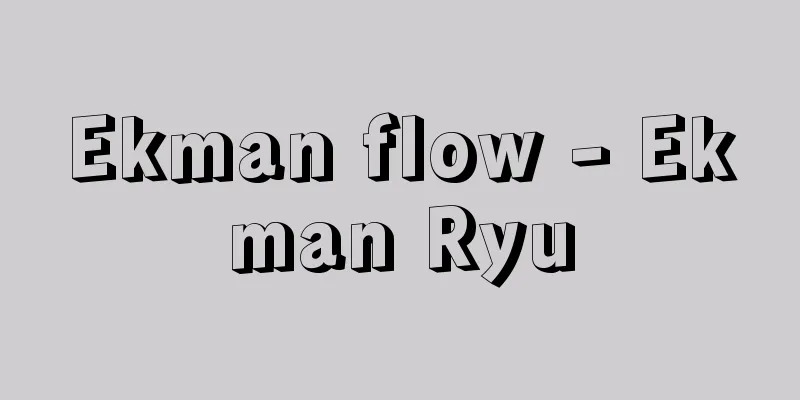Roman Alphabet - Romaji (English notation)

|
This refers to the characters used to write Japanese using the English alphabet. The name Romaji comes from the fact that it was once used in the Roman Empire. However, since the language of the Roman era was Latin, the characters used to write it are called Latin letters. The origin of the alphabet can be traced back as far as Egyptian writing. There are two types of characters: ideograms, which express the meaning of a word, and phonetic characters, which express the pronunciation of a word. Ideograms are logographic characters such as Chinese characters and Sumerian characters, while phonetic characters are syllabic characters such as kana and cuneiform characters, and phonemic characters, which are the smallest units of sound that express the pronunciation of a word. Phonetic characters include Greek, Latin, Cyrillic, and Arabic characters. With the spread of Catholicism, the Latin alphabet spread to Western Europe (England, Germany, France), Northern Europe (Denmark, Sweden, Norway, Finland, Iceland), Southern Europe (Spain, Portugal, Italy, Albania, Slovenia, Serbia), and parts of Eastern Europe and other regions (Poland, Czech Republic, Slovakia, Hungary, Romania, Estonia, Latvia, Lithuania). Around the time of Christ, the Latin alphabet had 23 letters, but in the Middle Ages, J, U, and W were added, making it 26 letters. These Latin characters are useful for expressing Latin phonemes, but languages with a different phonemic system from Latin lack the necessary characters, so they combine Latin characters or use slightly modified Latin characters. The English sh, German sch, and French ch are all combinations of letters to express the sound [ʃ]. In German, ö [ø] and ü [y] are used to express different vowels that do not exist in Latin by placing an umlaut over the Latin vowel. The Greek alphabet also entered the Slavic language world with the Greek Orthodox faith, where it was modified to create the Cyrillic alphabet used to write Russian. It is used to write the languages of minority groups in parts of Eastern Europe (Bulgaria, Croatia, and the Republic of North Macedonia) and the Russian Federation, as well as Mongolian in Mongolia. The Arabic alphabet developed with Islam, and is used in Arabic, Persian, Urdu, Uighur, and other languages. However, the switch to the Latin alphabet also occurred in Asia, with Turkey, Indonesia, Vietnam, and other countries adopting the Latin system. If the Latin alphabet that was introduced to Japan is called the Roman alphabet, then the Roman alphabet was also introduced to Japan by Christianity. Francis Xavier began to spread Christianity in Japan in 1549 (Tenbun 18), and as the number of believers increased thereafter, translations of doctrines and prayer books became more common. The oldest surviving document written in the Roman alphabet is the Japanese version of the Book of the Apostles, Sanctos no Gosagveo no vchi Nvqigaqi (1591), an excerpt from the work of all saints. This was followed by Christian versions of Roman alphabet books such as Feiqe no Monogatari (1592), the Tale of the Heike. All of these were written in a style based on Portuguese (ta row, ta chi tçu te to). However, the persecution of Christians began in 1613 (Keicho 18), and Roman alphabet books disappeared after that. From the Edo Shogunate's 8th Shogun Yoshimune's "Lifting the Ban on Western Books" (1720) to the end of the Edo period, Dutch language studies progressed, and Dutch scholars began to use Dutch romanization (ta row, ta ti toe te to). In the Meiji period, with the rise of Western studies, German romanization (ta row, ta tsi tsu te to) and French romanization (ta row, ta tsi tsou te to) were attempted, but J.C. Hepburn (Hepburn)'s Wagai Rinshusei (1867) led to the spread of English romanization, or the so-called Hepburn system (ta row, ta chi tsu te to). In response to this, Tanakadate Aikitsu proposed the Japanese romanization (ta row, ta ti tu te to) that was aligned with the Japanese hiragana chart (1885). This led to fierce conflict and competition between the two schools, the Hepburn system (later called the Standard System) and the Japanese system. The government also needed to unify romanization for international use, so in 1930 (Showa 5) it established a temporary romanization research committee, and after much discussion, issued an instruction on romanization spelling (1937). This was called the Kunrei system (ta row, ta ti tu te to). The Kunrei system was a slightly simplified version of the Japanese system. After World War II, American troops were stationed in Japan, and English became more common, so in 1954 (Showa 29) Cabinet Notification No. 1 was issued, allowing the Standard System spelling, which was more convenient for English, to be used. To write Japanese text, the standard system uses 23 of the 26 letters of the English alphabet, excluding Q, V, and X, while the Kunrei and Nihon systems use 20 letters other than C, F, J, Q, V, and X. In the Kunrei and Nihon systems, one character is used to represent a consonant, and for yo-on sounds, a y is added after the consonant (Cha row, tya tyu tyo). In the standard system, two characters may be combined, such as ch and ts, and yo-on sounds may not have a y added (Cha row, cha chu cho). In all three systems, the first character of a sentence is capitalized, but in the Nihon system, nouns are also capitalized. To represent a long vowel, the Kunrei and standard systems use a horizontal bar (ā) above the character, while the Nihon system uses a mountain shape (â). To represent a jump sound, the Kunrei and Nihon systems all use n, but the standard system changes it to m before p, b, or m (sampo, shimbun). When a vowel comes after a spastic consonant, the Japanese and standard styles add ' (gen'in), but the Kunrei style uses a - (gen-in). A spastic consonant is expressed by doubling the following consonant (matti, zassi), but the standard style uses t before ch and s before sh (matchi, zasshi). Romanization is efficient and easy to write because it uses fewer characters. It also has the advantage that it does not feel strange to foreigners. Another advantage is that the word separation makes it easy to grasp the units of words and understand their grammatical function. However, Japanese has many homonyms, so when using phonetic notation, a method must be devised to deal with this. [Koizumi Tamotsu] ©Shogakukan "> Roman spelling Source: Shogakukan Encyclopedia Nipponica About Encyclopedia Nipponica Information | Legend |
|
英語式のアルファベットを用いて日本語を表記する場合の文字をいう。ローマ字は、かつてローマ帝国で使用された文字ということからこの名が生じた。しかし、ローマ時代の言語はラテン語であるから、これを表記する文字はラテン文字といわれる。アルファベットの起源は、遠くエジプト文字までさかのぼることができる。 文字には、語の意味を表す表意文字と語の読みを表す表音文字がある。表意文字は漢字やシュメール文字のような表語文字のことで、表音文字には仮名や楔形(くさびがた)文字のような音節文字と、語の読みを表す音声の最小単位を示す音素文字とがある。音素文字としてはギリシア文字、ラテン文字、キリル文字、アラビア文字などがある。ラテン文字はカトリック教の伝道とともに西欧(イギリス、ドイツ、フランス)、北欧(デンマーク、スウェーデン、ノルウェー、フィンランド、アイスランド)、南欧(スペイン、ポルトガル、イタリア、アルバニア、スロベニア、セルビア)、東欧の一部その他(ポーランド、チェコ、スロバキア、ハンガリー、ルーマニア、エストニア、ラトビア、リトアニア)へ広がった。ラテン文字は紀元前後、23文字であったが、中世にJ,U,Wが加わって26文字となった。これらラテン文字は、ラテン語の音素を表すのには便利であるが、ラテン語とは異なる音素体系をもつ言語では文字が不足するため、ラテン文字を組み合わせたり、ラテン文字をすこし変形して用いている。英語のsh、ドイツ語のsch、フランス語のchはいずれも[ʃ]という音を表すために文字を組み合わせたものである。ドイツ語ではö [ø]やü[y]のようにラテン語の母音文字の上にウムラウトの点を打つことにより、ラテン語にない別種の母音を表示している。また、ギリシア文字はギリシア正教の信仰とともにスラブ語圏に入り、ここで変形されて、ロシア語の表記に用いられているキリル文字を生み出した。これは東欧の一部(ブルガリア、クロアチア、北マケドニア共和国)とロシア連邦内の小数民族の言語およびモンゴルのモンゴル語を表すのに使用されている。アラビア文字はイスラム教とともに進展し、アラビア語、ペルシア語、ウルドゥー語、ウイグル語などがこれによっている。しかし、アジアでもラテン文字への切り換えが行われ、トルコ、インドネシア、ベトナムなどがラテン式を採用した。 日本へ入ってきたラテン文字をローマ字とよぶならば、日本でもローマ字はキリスト教により導入された。フランシスコ・ザビエルは1549年(天文18)に日本でキリスト教の布教を始めたが、その後信徒の数が増えてきたので、教義や祈祷(きとう)書の翻訳が盛んになった。ローマ字で表記された現存する最古の文献は、日本語版使徒行伝『諸聖徒の御作業の内抜書(うちぬきがき)』Sanctos no Gosagveo no vchi Nvqigaqi(1591)である。続いて『平家物語』Feiqe no Monogatari(1592)などのキリシタン版ローマ字本が刊行された。いずれもポルトガル語に基づく書き方であった(タ行ta chi tçu te to)。しかし、1613年(慶長18)よりキリシタン弾圧が始まり、以後ローマ字本は姿を消した。江戸幕府第8代将軍吉宗(よしむね)の「洋書解禁」(1720)から幕末にかけてオランダ語の研究が進み、蘭学(らんがく)者はオランダ式ローマ字を用いるようになった(タ行ta ti toe te to)。明治に入り、洋学の興隆からドイツ式ローマ字(タ行ta tsi tsu te to)やフランス式ローマ字(タ行ta tsi tsou te to)が試みられたが、J・C・ヘップバーン(ヘボン)の『和英語林集成』(1867)により英語式ローマ字、いわゆるヘボン式が普及するようになった(タ行ta chi tsu te to)。これに対し、田中館愛橘(たなかだてあいきつ)は日本語の五十音図にあわせた日本式ローマ字(タ行ta ti tu te to)を提唱した(1885)。そこでヘボン式(のちに標準式とよばれる)と日本式の2派の間に激しい対立と競争が生じた。政府も、対外的にローマ字表記の統一が必要となったので、1930年(昭和5)に臨時ローマ字調査会を設置し、論議を重ねた結果、ローマ字のつづり方につき訓令が公布された(1937)。これを訓令式という(タ行ta ti tu te to)。訓令式は日本式をすこし簡略にしたものである。第二次世界大戦後アメリカ軍が駐留し、英語が盛んになったので、1954年(昭和29)英語に都合のよい標準式つづり方をも許容する内閣告示第1号が出された。 日本文を表記するのに、標準式は、英語のアルファベット26文字のうちQ,V,Xを除いた23文字を、訓令式と日本式はC,F,J,Q,V,X以外の20文字を用いる。訓令式と日本式では、子音を表すのに1文字を用い、拗(よう)音は子音字のあとにyを付している(チャ行tya tyu tyo)。標準式ではch, tsのように2文字を組み合わせることがあり、拗音もyをつけないことがある(チャ行cha chu cho)。3方式とも文頭の字は大文字としているが、日本式では名詞も大文字で書き始める。長音を表すのに、訓令式と標準式は文字の上に横棒(ā)をつけ、日本式は山形(â)をつける。はねる音を表すのに、訓令式と日本式はすべてnによるが、標準式はp,b,mの前ではmに変える(散歩sampo、新聞shimbun)。はねる音の次に母音がくる場合、日本式と標準式は’をつける(原因gen'in)が、訓令式は-を挟む(gen-in)。詰まる音は次にたつ子音を重ねて表す(マッチmatti、雑誌zassi)が、標準式はchの前ではtを、shの前ではsを用いる(matchi, zasshi)。 ローマ字表記は、使用する文字の数が少ないので、能率的で表記が容易である。また、外国人に違和感を与えないという利点もある。さらに、分かち書きにより、語の単位を把握し、その文法的機能が理解しやすいという長所もある。しかし日本語は同音異義語が多いので、表音表記の場合はこれを処理する方法を講じなければならない。 [小泉 保] ©Shogakukan"> ローマ字のつづり方 出典 小学館 日本大百科全書(ニッポニカ)日本大百科全書(ニッポニカ)について 情報 | 凡例 |
>>: National Museum of Rome - Museo Nazionale Romano
Recommend
Cashmere (animal) (English spelling) Cashmere
...Goat meat has a particular smell that many peo...
cauchu
...Although the amount of rubber latex secreted i...
《Crónica mexicayotl》 (English spelling)
…Grandson of Aztec Emperor Moctezuma II. His work...
Posada
Mexican printmaker. Born in Aguascalientes, a city...
Abaca - Abaca
Same as "Manila hemp." Source: About Sho...
Product life cycle
Also known as the product life cycle, PLC. The ide...
Kirigami license - Kirigamimenkyo
…Of course, it was convenient for secret transpor...
Lime - Ishibai
〘Noun〙① A general term for quicklime (calcium oxid...
Tardigrada; water bear; bear-animalcule
A general term for animals belonging to the Tardig...
Syphax
…In the early stages of the Second Punic War, he ...
Recaredo (English spelling)
?‐601 King of the Visigothic Kingdom, established ...
Focus - Shoten (English spelling) focus
When light rays entering an optical system parall...
Standard diamond - Kikakudaiya
...Train timetables are created in the following ...
Mediņš, J.
… With the birth of the independent state of Latv...
Chikuma Mountains - Chikumasanchi
A mountain range running north to south through c...









